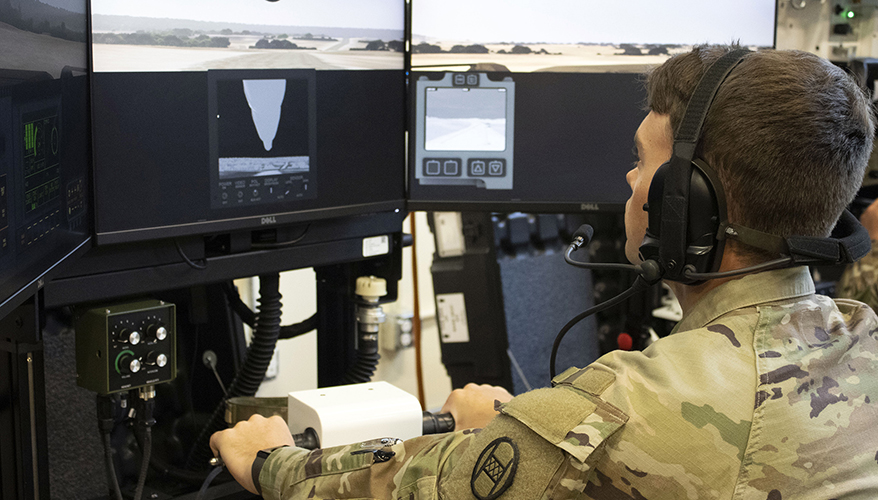TRAINING AND SIMULATION
I/ITSEC NEWS: Ukraine War Informing Army’s Synthetic Training Environment
By Josh Luckenbaugh

Army photo
ORLANDO, Florida — Russia’s war against Ukraine — and the resistance to the invasion — has provided the U.S. Army with several observations it could incorporate into its training systems, service officials said.
The Army is currently working on the Synthetic Training Environment, which will “provide a collective, multi-echelon training and mission rehearsal capability for the operational, institutional and self-development training domains” by combining “live, virtual, and constructive training environments” into a single training environment, according to the Army’s Acquisition Support Center website.
The service has outlined four tenets as it builds the STE — it must be efficient, effective, easy to use, and encompassing, said Brig. Gen. William Glaser, the director of Army Futures Command’s Synthetic Training Environment Cross-Functional Team.
“This is actually the first time that we've looked at a holistic training strategy, from individual soldier, from squad, all the way up to [Army Service Component Commands],” Glaser said during a panel discussion at the National Training and Simulation Association's annual Interservice/Industry Training, Simulation and Education Conference in Orlando. NTSA is an affiliate of the National Defense Industrial Association.
“In the past, a lot of times these systems ... were siloed,” he said. “We had to achieve some sort of interoperability using interfaces and bridges and so forth, but going forth with a single, holistic, synthetic training environment, we'll achieve a lot of these objectives for our goal.”
As the Army undergoes a “transformational change” to modernize and maintain its status as the “dominant land force in the world,” the conflict in Ukraine is informing many aspects of these modernization efforts, Glaser said.
Secretary of the Army Christine Wormuth recently outlined six objectives the Army of 2030 needs to accomplish, several of which coincided with characteristics of the war in Ukraine, Glaser noted.
“We're seeing in Ukraine … [that] the battlefield has become very transparent,” he said. “The art of masking is becoming much, much more important than it ever has been before." One of the secretary's priorities is be able to see and sense farther than adversaries even in this era of transparency.
Another priority is being able to rapidly and reliably communicate and share data within the Army, other services and coalition partners. Another is to sustain a fight across contested terrain.
These priorities have “all been drawn off the lessons learned from what we're seeing in Ukraine, and it’s what's driving the Synthetic Training Environment to try and achieve that,” Glaser said.
“We're responsible for setting the training environment to achieve those training objectives. And if we're not replicating those type of conditions, then we're failing our leaders,” he said.
That said, the Army must be cautious in what permanent changes it makes to training based on the war in Ukraine, said Col. Scott Woodward, deputy commander at the Army’s Combined Arms Center. “We just need to be careful with how we're using our words, because really right now they’re observations until we … put them into doctrine and change the way we train,” he said.
Some of those lessons learned change on a daily, weekly or monthly basis. "We’re calling them observations. The lessons learned will come later on,” he added.
Topics: Training and Simulation, International, Army News
